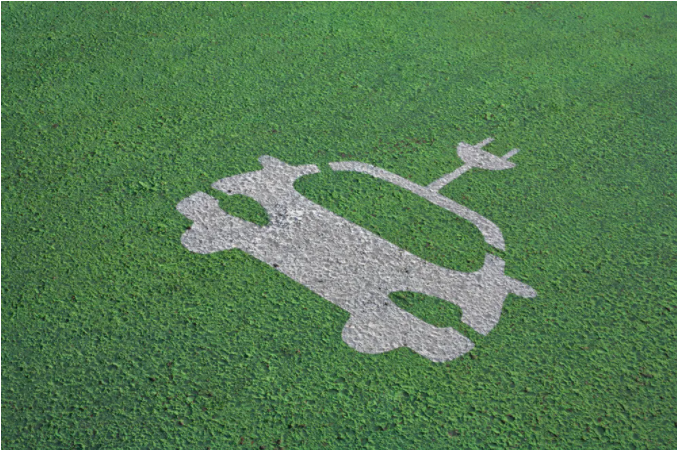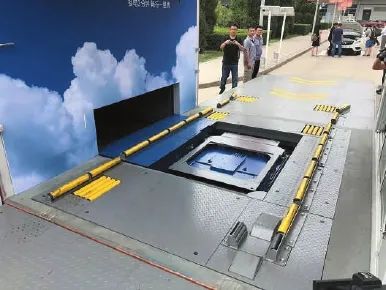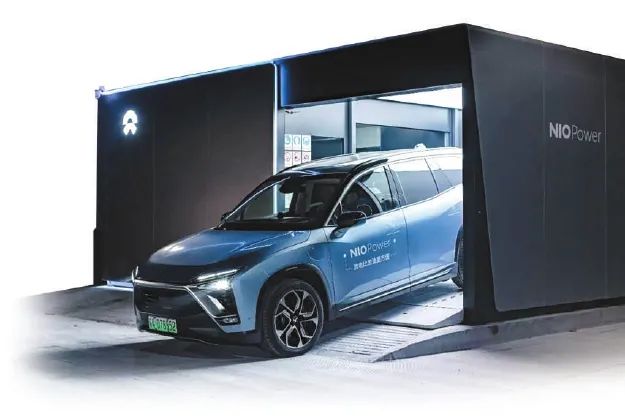| Power change, air outlet? False tuyere? |
| Release time:2023-02-14 09:43:25| Viewed: |
In recent years, the power exchange enterprises have taken frequent actions. The power exchange territory of Aodong New Energy is rapidly expanding. After the first batch of cooperation stations with Sinopec were landed, on August 4, Aodong New Energy signed a strategic cooperation agreement with domestic instant delivery companies. As a way to rapidly improve the charging and user experience, the power exchange technology has become the outlet of enterprises after obtaining policy support, making enterprises profitable. However, from the perspective of the large-scale development of the industry, there are great obstacles to the power exchange mode. It is difficult to form a real air outlet without solving the problems of inconsistent battery specifications and large site investment. For the industry, electricity exchange seems to be still a false proposition.
Power exchange enterprises "speed up"
On August 4, Aodong New Energy signed a strategic cooperation agreement with domestic instant delivery companies. According to the agreement, Aodong New Energy and Flash Transmission will cooperate to promote the commercial application of power exchange in commercial logistics scenarios based on Aodong's city-level power exchange service network nationwide, including the provision of power exchange service support for flash transmission, and the joint development of two-wheel and light four-wheel tram models with vehicle enterprises. ATDC's power exchange is not only limited to passenger vehicles, but also expanded to the field of commercial vehicles that are easier to commercialize. Since the beginning of this year, the scale of the power exchange of the Olympic Power Station has been expanding.
As early as April, Aodong New Energy and Sinopec formally signed a strategic cooperation. According to the cooperation consensus reached by the two sides, Aodong New Energy will arrange replacement power stations in more than 30000 Sinopec gas stations nationwide. Cai Dongqing, chairman of Aodong New Energy, said that Aodong has cooperated with 14 main engine plants, such as FAW, BAIC, SAIC, Chang'an and Dongfeng. By 2025, Aodong will build more than 10000 power exchange stations and build a multi-brand vehicle sharing power exchange platform that can meet the power exchange and supplement services of more than 10 million new energy vehicles.
The scale of power exchange mode is expanding rapidly. According to the latest data released by the China Electric Vehicle Charging Infrastructure Promotion Alliance (hereinafter referred to as the "Charging Alliance"), as of the end of July, the Aodong New Energy Exchange Power Station has put 344 exchange power stations into operation; Weilaize has operated 312 replacement power stations; Hangzhou Bertan operates 107 power exchange stations, and these three enterprises form the head camp of the domestic power exchange mode. For enterprises, the expanding scale will be another outlet. Wuhan Weineng Battery Assets Co., Ltd. (hereinafter referred to as "Weineng"), which provides operation and management support for Weilai Power Exchange, even proposed to manage 100 billion yuan of battery assets by 2025.
The original obstacles are still insurmountable
"It takes 1.5 hours to charge at 100 kilowatt-hours; it is fast to change the power, but there is no battery in the power station." This is the frustration of a car owner in Beijing. Due to the choice of Weilai's battery pack upgrade service, his car now uses a 100-kilowatt-hour battery pack. However, due to the limited number of batteries, the power station often does not have enough battery packs, so he often has to choose to charge. For consumers, it is really very convenient to change the battery. They can get 500 kilometers of driving mileage in 3 minutes, but the reality is that there are not enough batteries to change, which makes the experience of changing the battery a discount. Many people have to recharge to meet their needs. The power exchange is not so smooth in actual use. In other words, the tuyere seems to be a false proposition.
"The standards are not uniform and the specifications vary greatly, which makes it difficult for the whole industry to implement them uniformly." An industry expert admitted in an interview with the reporter of China Auto News that the electricity exchange looks beautiful, but because the standards are not uniform, the interfaces are different, and it is difficult to let all batteries and vehicles participate in the electricity exchange process, which makes it difficult to expand the scale of electricity exchange, so it is difficult to form a climate at this tuyere. At the same time, changing power means that more batteries are needed. In terms of current battery costs, this is a huge investment in heavy assets, and it is difficult to make profits in a short time.
Mu Tuorui, executive vice president of Volkswagen Group (China), said that because of the mismatches of vehicle battery design and interface, it is difficult to promote the power exchange model in the whole industry on a large scale, and at the same time, more investment is needed for power exchange. These two factors restrict the development of the power exchange mode. Without solving these two problems, it is difficult for the power exchange mode to form a real air outlet. At present, it is very difficult to solve these two problems. More importantly, because of the different electric control strategies, even if the batteries of different manufacturers can achieve the same interface, it is difficult to exchange different battery packs on different vehicles, and there are certain security risks. The hidden worry of "not dare to change even if it can be changed" makes many enterprises dare not join the power exchange camp. There are more enterprises that regard electronic control strategy as one of their core competitiveness, and will not easily connect and disclose their electronic control strategy to the outside to avoid losing the core technology advantage.
The power exchange has not yet passed the commercial closed loop
Even for enterprises, the process of developing the electricity exchange mode is not a smooth path. The first problem to be faced is investment. Lu Yi, deputy general manager of Aodong New Energy, once disclosed the cost of Aodong New Energy Power Station: taking an Aodong New Energy 3.0 power station as an example, the cost of power replacement equipment, batteries, power capacity increase, labor, site lease and other costs is about 5 million to 6 million yuan, and the annual depreciation cost of equipment depreciation is about 500000 to 600000 yuan. In terms of income, a power exchange station equipped with 28 standard batteries can change electricity for 420 times at full load 24 hours a day for 3 minutes at a time, about 40 kilowatt-hours each time. Based on the utilization rate of 60%, it is equivalent to selling 10000 kilowatt-hours of electricity by changing electricity 250 times a day. Assume that in Beijing, the one-time electricity cost is 1.75 yuan, and the annual income of the power station is about 6 million to 7 million yuan. In an ideal state, excluding about 1/3 of the electricity cost, 600000 yuan of depreciation cost, labor, rent and other expenses in the income, the annual income of each power station will exceed 3 million yuan. However, in fact, it is difficult to achieve such scale and operational benefits for general power stations. Even in Beijing, which has the best operation status of the power exchange of the Olympic Power, there is no such large-scale power exchange to support the power exchange station to reach the ideal operation status. The data shows that the utilization rate of the new energy exchange power stations of Aodong is less than 60% in most cities. In some cities where there are not so many trams to be replaced, the cooperation and support of all parties are needed to achieve the ideal operation condition of the power station, which is not achieved by enterprises alone. Even with policy support, it is difficult to carry out large-scale power exchange operations in many places without clear business model support.
Weilai Automobile is one of the few domestic automobile enterprises that insist on promoting the development of power exchange. The promotion of power exchange mode has also become an effective way for Weilai to quickly open the market and improve the user experience. However, even Weilai, it is difficult to play the conversion of electricity on its own. In order to better promote the operation of the power-change mode, at the beginning of its decision to promote the power-change mode, Weilai established a special battery management company - Weineng, which now manages all the batteries used for power-change in Weilai. For such an enterprise specialized in the management of battery replacement, the battery attenuation and other problems need to be solved if the battery replacement mode is to work better, and even the contradiction between the vehicle and battery life is not uniform. Although in the planning of Weineng, it will not only manage the battery of Weilai in the future, but also have business access other than Weilai power exchange. But before that, whether it can get through the road of business model operation and survive remains to be tested. In the actual exploration, no power exchange enterprise has been able to achieve commercial success by its own strength, which is also the fundamental reason why it is difficult to really form the outlet of the power exchange model.
Economies of scale can be said to be the key to the real survival of power exchange. But in reality, in addition to the factors that restrict the large-scale development of the power exchange mode, there is also competition from the charging technology route. Moore stressed that, considering all aspects, Volkswagen chose fast charging as the main energy supplement method and the ultimate goal of battery technology charging technology. Even Weilai is not only relying on the power exchange mode, but also promoting a variety of charging modes to better obtain the user experience. The introduction of different charging modes is bound to squeeze the share of power exchange. According to the data released by the Charging Alliance, as of July 2021, the cumulative number of charging infrastructure in the country was 2.015 million, an increase of 50.2% year on year. The development speed of charging infrastructure is far higher than that of power exchange. With the increasing convenience of charging, the share of power exchange is bound to be occupied. In order to develop on a large scale, we need to face more competitive factors at the market level. |






